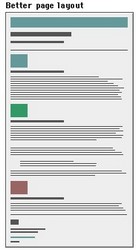free pages from our English Language software program
Homonyms – definition
![]() Homonyms are words which are spelled the same, but which have different meanings.
Homonyms are words which are spelled the same, but which have different meanings.
Examples
bear – an animal
bear – to carrybore – to drill a hole
bore – a tedious persondown – at a lower part
down – bird’s feathersdraft – preliminary sketch
draft – a money order
Use
![]() The apparent similarities in these words sometimes causes confusion — particularly to non-native speakers.
The apparent similarities in these words sometimes causes confusion — particularly to non-native speakers.
![]() Such words may or may not have the same etymological origins.
Such words may or may not have the same etymological origins.
![]() NB! Homonyms are a rich source of puns in English.
NB! Homonyms are a rich source of puns in English.
![]() Strictly speaking, homonyms may be broken down into two different categories – homophones and homographs.
Strictly speaking, homonyms may be broken down into two different categories – homophones and homographs.
![]() Homophones are words which are pronounced in the same way, but which have different spellings:
Homophones are words which are pronounced in the same way, but which have different spellings:
threw flung through from end to end bow incline from the waist bough large tree-branch
![]() Homographs are words which have the same spelling, but which are pronounced differently:
Homographs are words which have the same spelling, but which are pronounced differently:
lead a heavy metal lead to walk in front wind air movement wind to coil
![]() One reason for these similarities is that spelling is only a rough approximation to pronunciation.
One reason for these similarities is that spelling is only a rough approximation to pronunciation.
Self-assessment quiz follows >>>
© Roy Johnson 2003
English Language 3.0 program
Books on language
More on grammar
 Good page layout
Good page layout

